Abstract
Social approach to peers was evaluated as an intervention for isolate preschoolers. During baseline, confederate peers made few social approaches to the target subjects. Confederates greatly increased their rate of social approaches during the first intervention, decreased social approaches during a second baseline, and increased social approaches again in a second intervention phase. Increases in confederate social initiations immediately increased the frequency of subjects' positive social behavior. Additionally, five of six subjects showed an increase in their own positive social initiations during intervention periods. The results suggest that: (a) peers may be programmed to increase the positive social behaviors of their isolate classmates, and (b) remediating social deficits requires assessment and intervention specifically tailored to the individual child.
Keywords: social interaction, isolate behavior, social initiation, modelling, vicarious reinforcement, peers, confederates, preschool children
Full text
PDF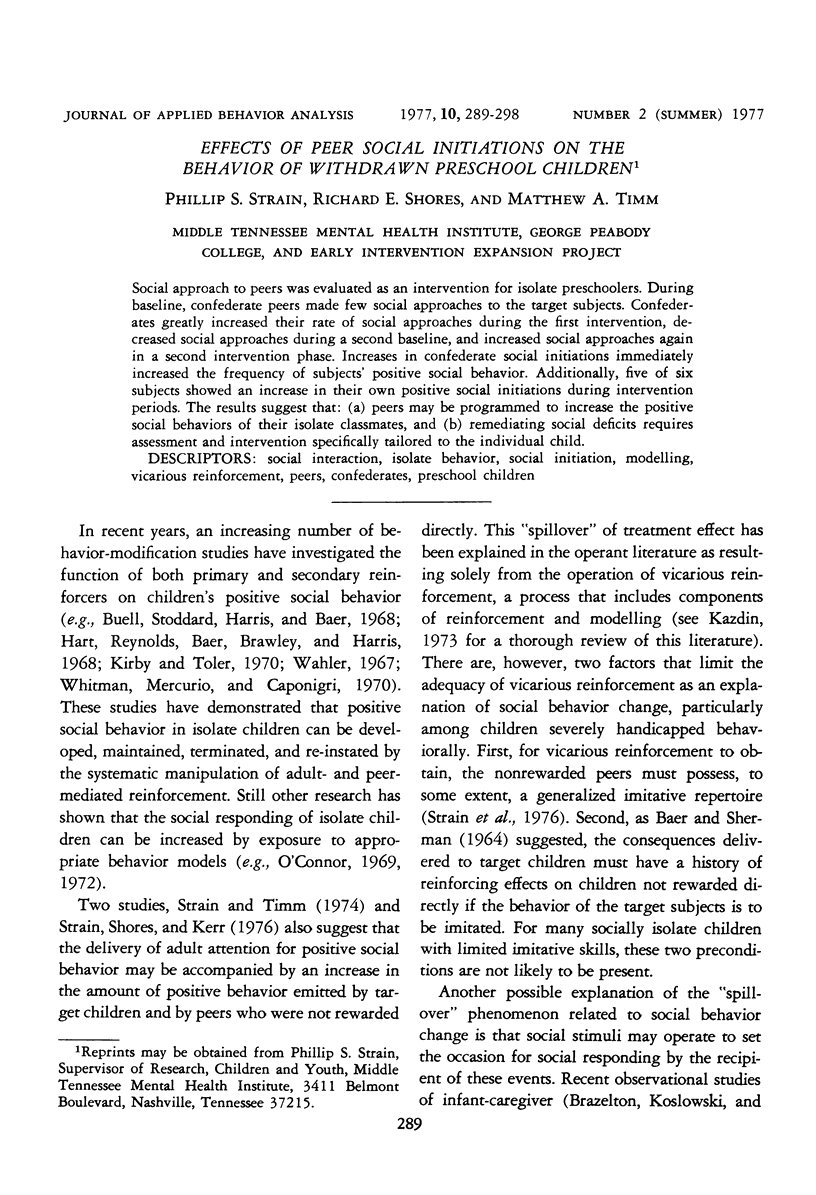
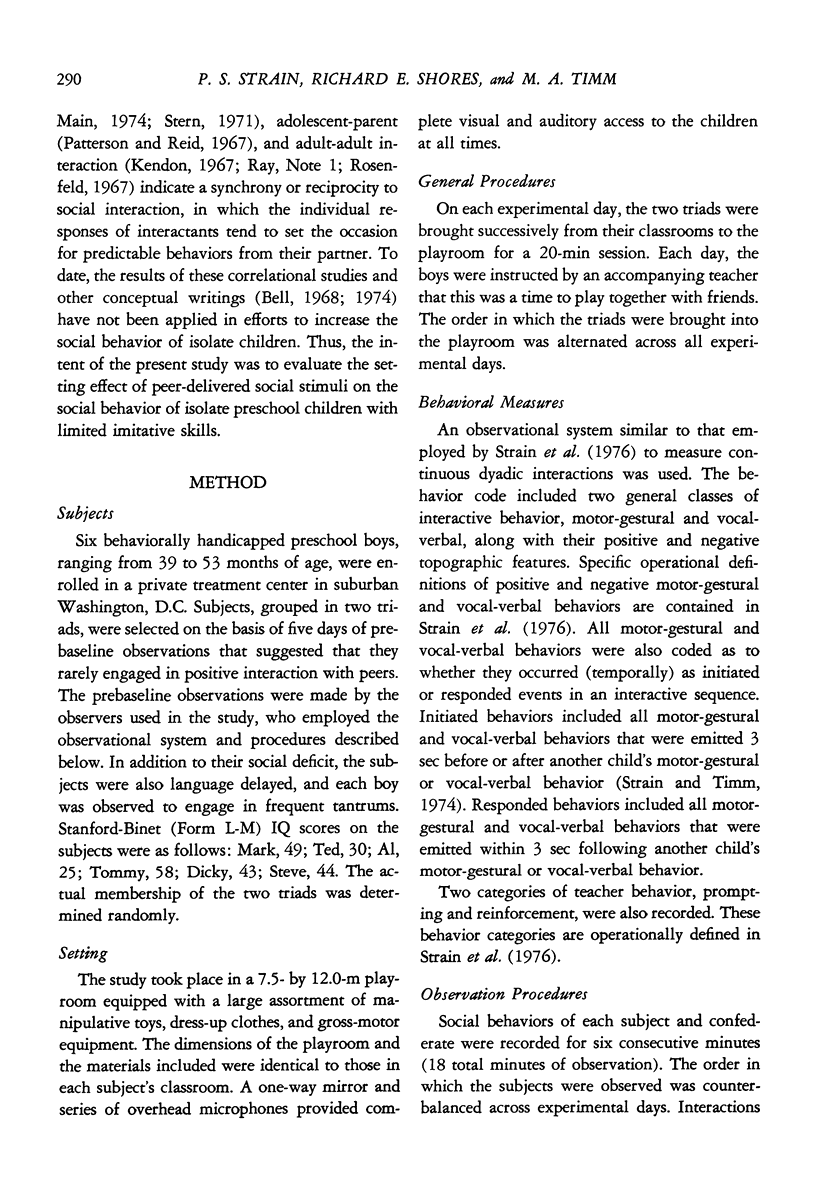
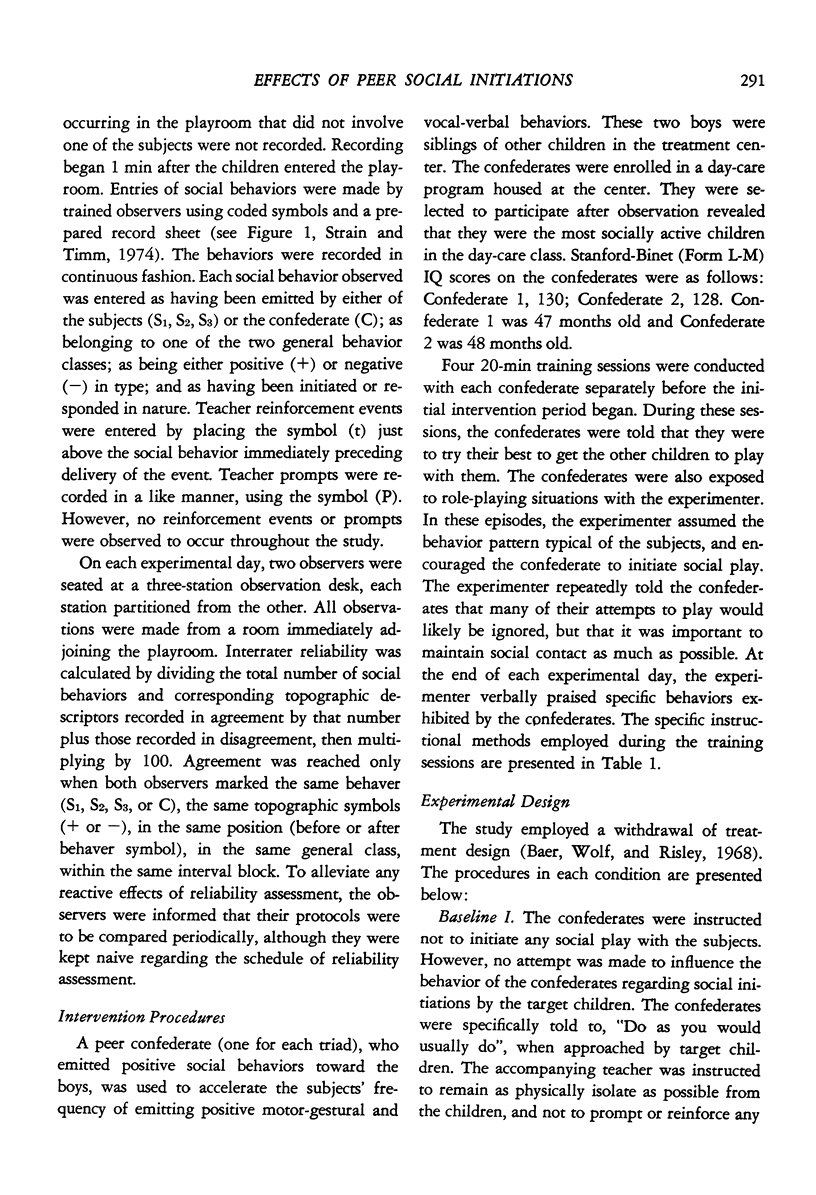
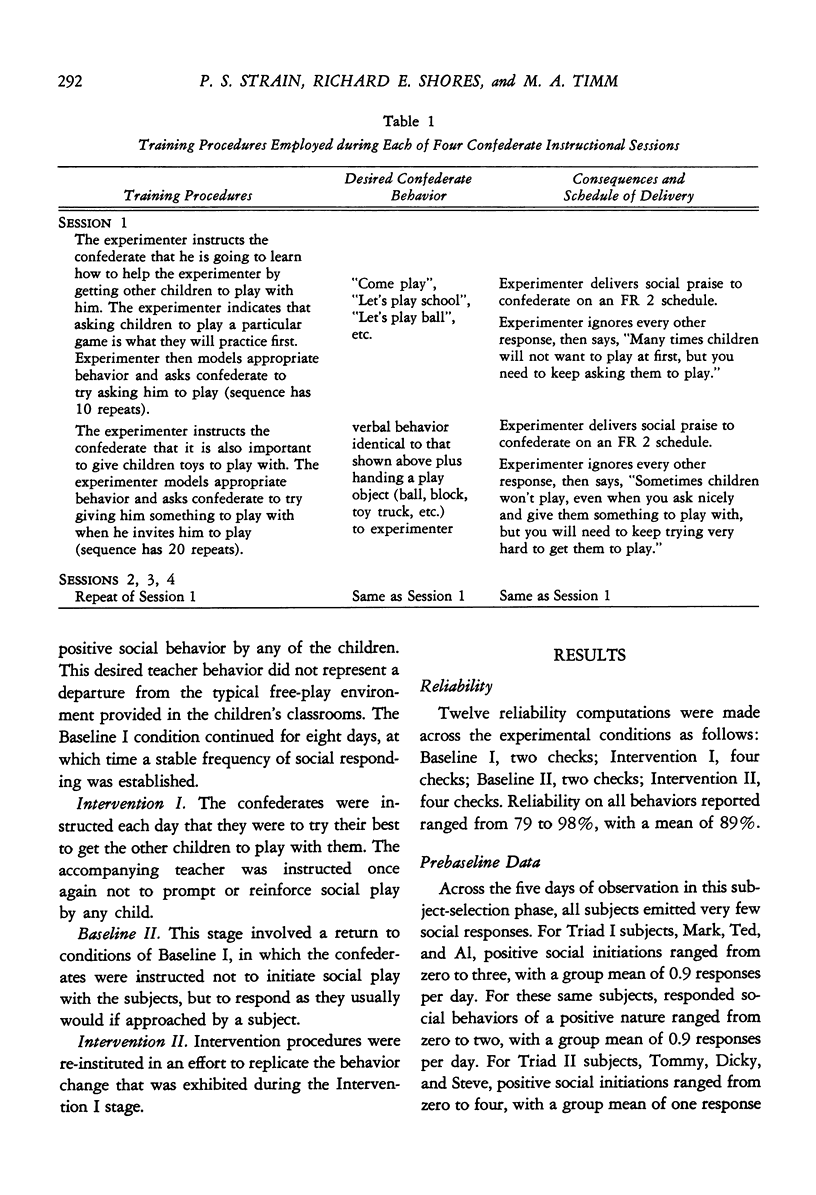

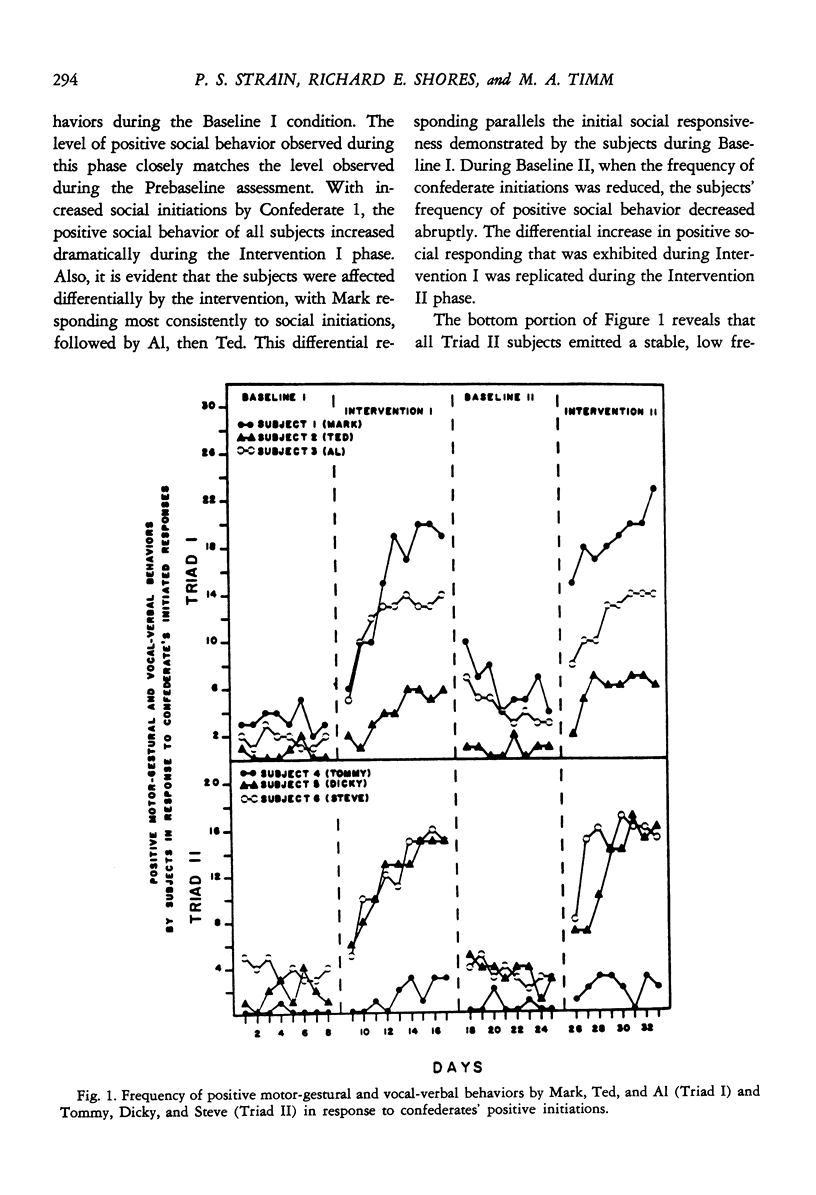
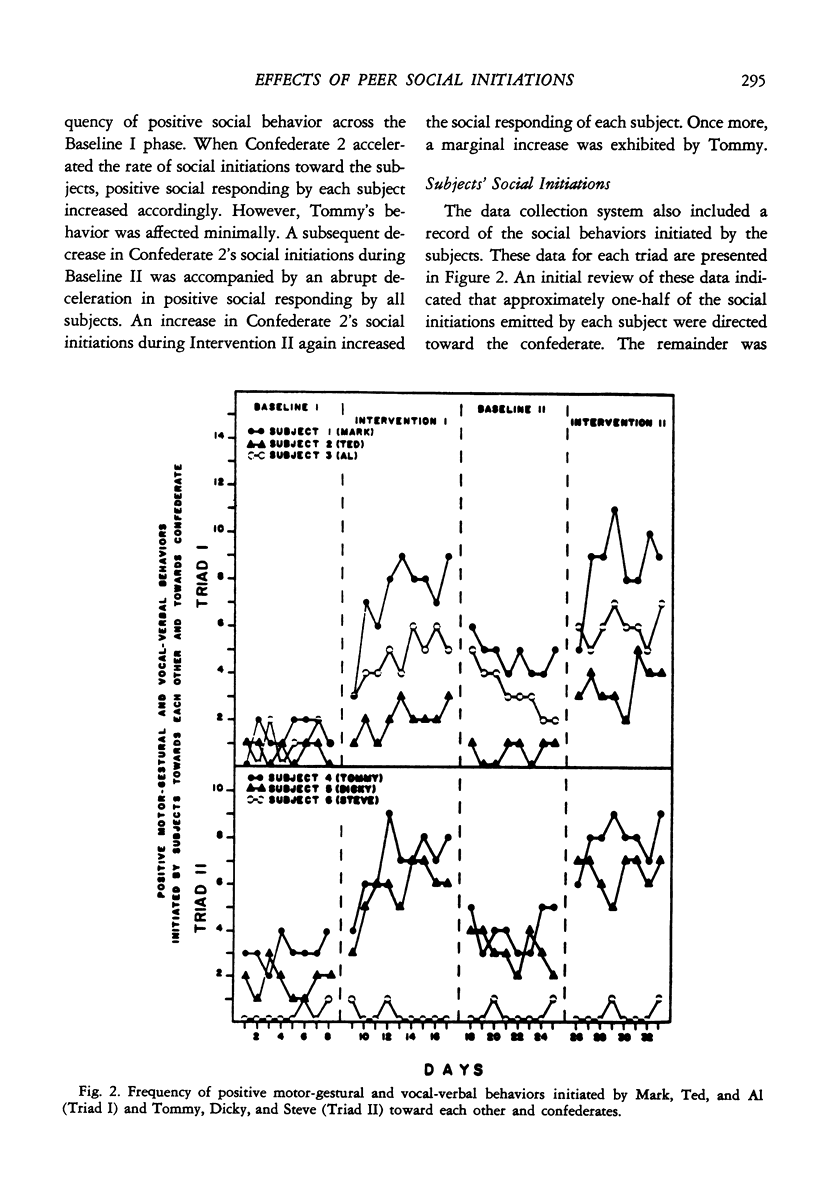
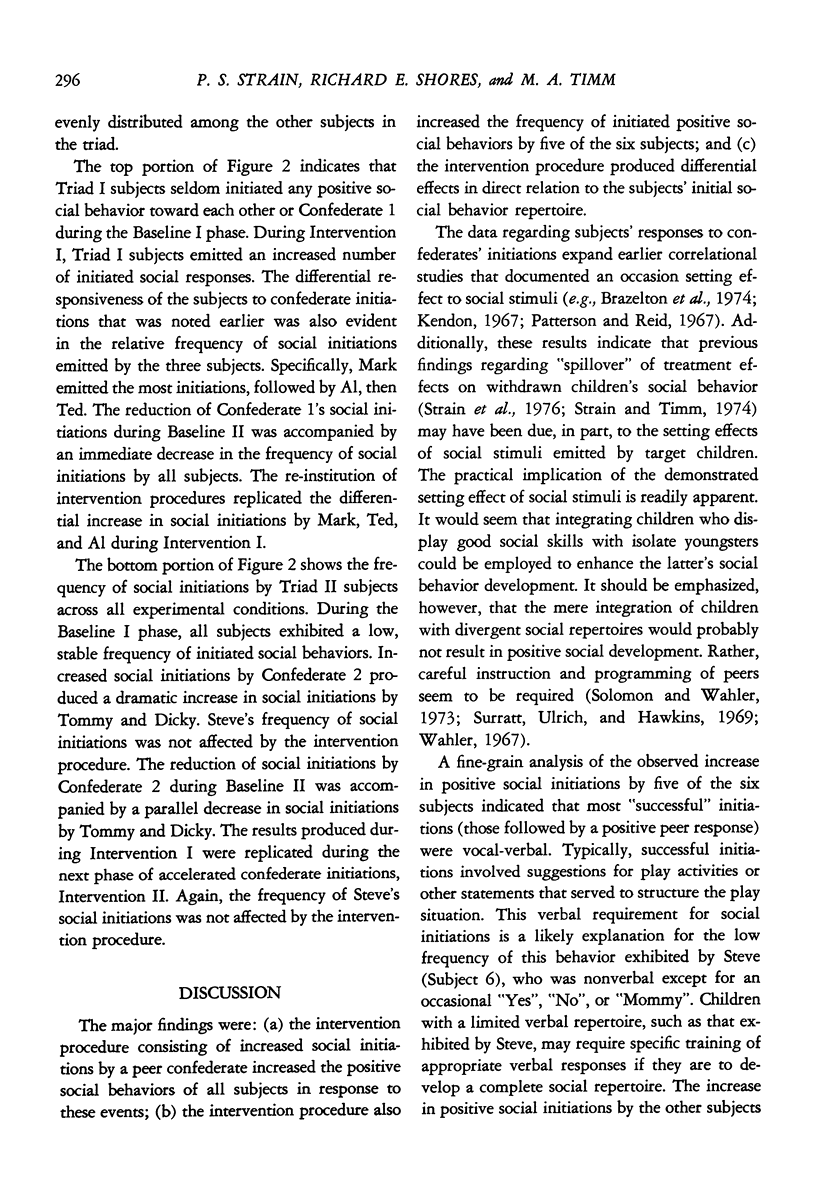
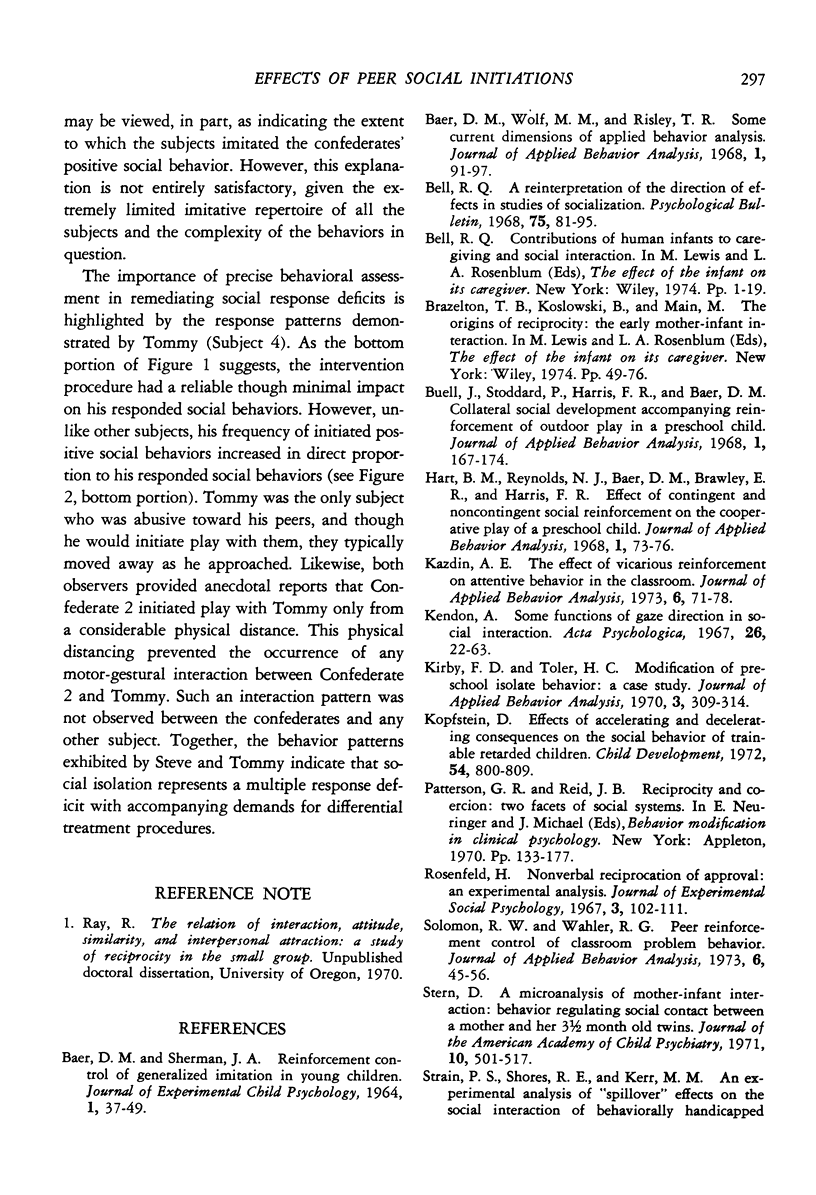

Selected References
These references are in PubMed. This may not be the complete list of references from this article.
- Baer D. M., Wolf M. M., Risley T. R. Some current dimensions of applied behavior analysis. J Appl Behav Anal. 1968 Spring;1(1):91–97. doi: 10.1901/jaba.1968.1-91. [DOI] [PMC free article] [PubMed] [Google Scholar]
- Bell R. Q. A reinterpretation of the direction of effects in studies of socialization. Psychol Rev. 1968 Mar;75(2):81–95. doi: 10.1037/h0025583. [DOI] [PubMed] [Google Scholar]
- Buell J. Collateral social development accompanying reinforcement of outdoor play in a preschool child. J Appl Behav Anal. 1968 Summer;1(2):167–173. doi: 10.1901/jaba.1968.1-167. [DOI] [PMC free article] [PubMed] [Google Scholar]
- Hart B. M., Reynolds N. J., Baer D. M., Brawley E. R., Harris F. R. Effect of contingent and non-contingent social reinforcement on the cooperative play of a preschool child. J Appl Behav Anal. 1968 Spring;1(1):73–76. doi: 10.1901/jaba.1968.1-73. [DOI] [PMC free article] [PubMed] [Google Scholar]
- Kazdin A. E. The effect of vicarious reinforcement on attentive behavior in the classroom. J Appl Behav Anal. 1973 Spring;6(1):71–78. doi: 10.1901/jaba.1973.6-71. [DOI] [PMC free article] [PubMed] [Google Scholar]
- Kendon A. Some functions of gaze-direction in social interaction. Acta Psychol (Amst) 1967;26(1):22–63. doi: 10.1016/0001-6918(67)90005-4. [DOI] [PubMed] [Google Scholar]
- Kirby F. D., Toler H. C. Modification of preschool isolate behavior: a case study. J Appl Behav Anal. 1970 Winter;3(4):309–314. doi: 10.1901/jaba.1970.3-309. [DOI] [PMC free article] [PubMed] [Google Scholar]
- Kopfstein D. Effects of accelerating and decelerating consequences on the social behavior of trainable retarded children. Child Dev. 1972 Sep;43(3):800–809. [PubMed] [Google Scholar]
- Solomon R. W., Wahler R. G. Peer reinforcement control of classroom problem behavior. J Appl Behav Anal. 1973 Spring;6(1):49–56. doi: 10.1901/jaba.1973.6-49. [DOI] [PMC free article] [PubMed] [Google Scholar]
- Stern D. N. A micro-analysis of mother-infant interaction. Behavior regulating social contact between a mother and her 3-month-old twins. J Am Acad Child Psychiatry. 1971 Jul;10(3):501–517. doi: 10.1016/s0002-7138(09)61752-0. [DOI] [PubMed] [Google Scholar]
- Strain P. S., Shores R. E., Kerr M. M. An experimental analysis of "spillover" effects on the social interaction of behaviorally handicapped preschool children. J Appl Behav Anal. 1976 Spring;9(1):31–40. doi: 10.1901/jaba.1976.9-31. [DOI] [PMC free article] [PubMed] [Google Scholar]
- Strain P. S., Timm M. A. An experimental analysis of social interaction between a behaviorally disordered preschool child and her classroom peers. J Appl Behav Anal. 1974 Winter;7(4):583–590. doi: 10.1901/jaba.1974.7-583. [DOI] [PMC free article] [PubMed] [Google Scholar]
- Surratt P. R., Ulrich R. E., Hawkins R. P. An elementary student as a behavioral engineer. J Appl Behav Anal. 1969 Summer;2(2):85–92. doi: 10.1901/jaba.1969.2-85. [DOI] [PMC free article] [PubMed] [Google Scholar]
- Whitman T. L., Mercurio J. R., Caponigri V. Development of social responses in two severely retarded children. J Appl Behav Anal. 1970 Summer;3(2):133–138. doi: 10.1901/jaba.1970.3-133. [DOI] [PMC free article] [PubMed] [Google Scholar]


